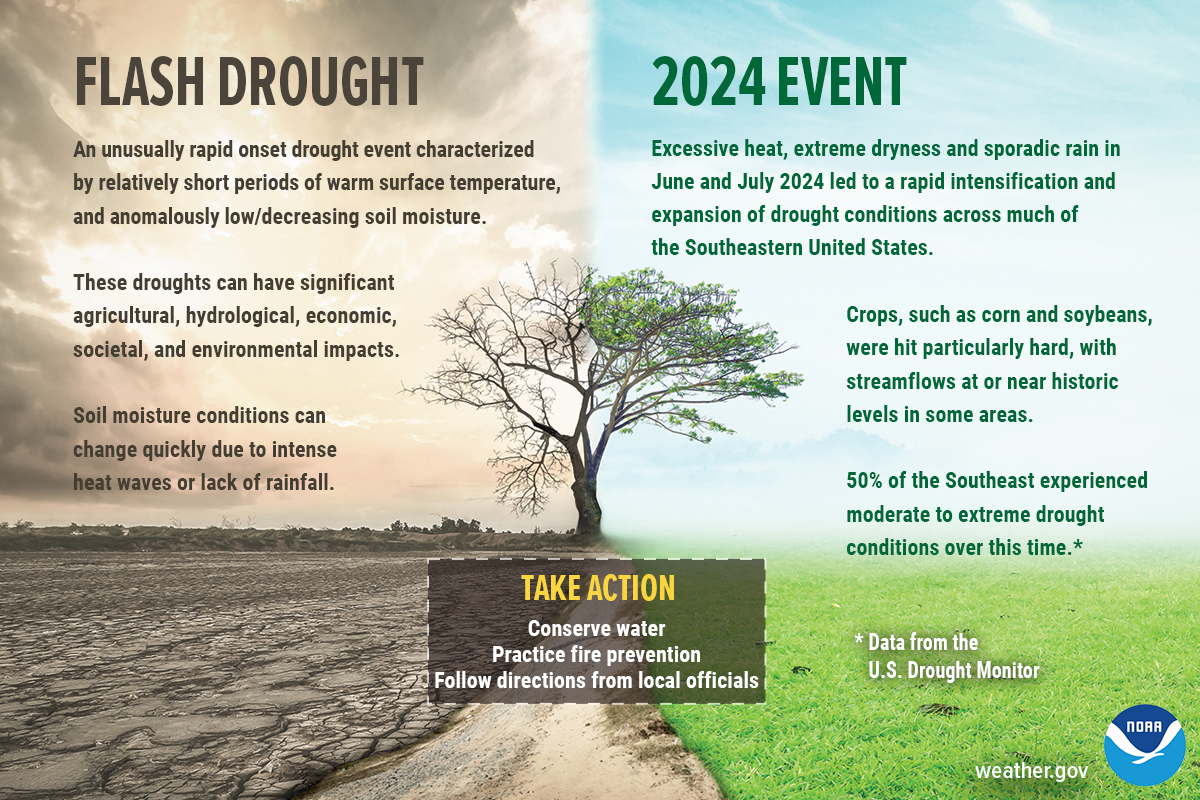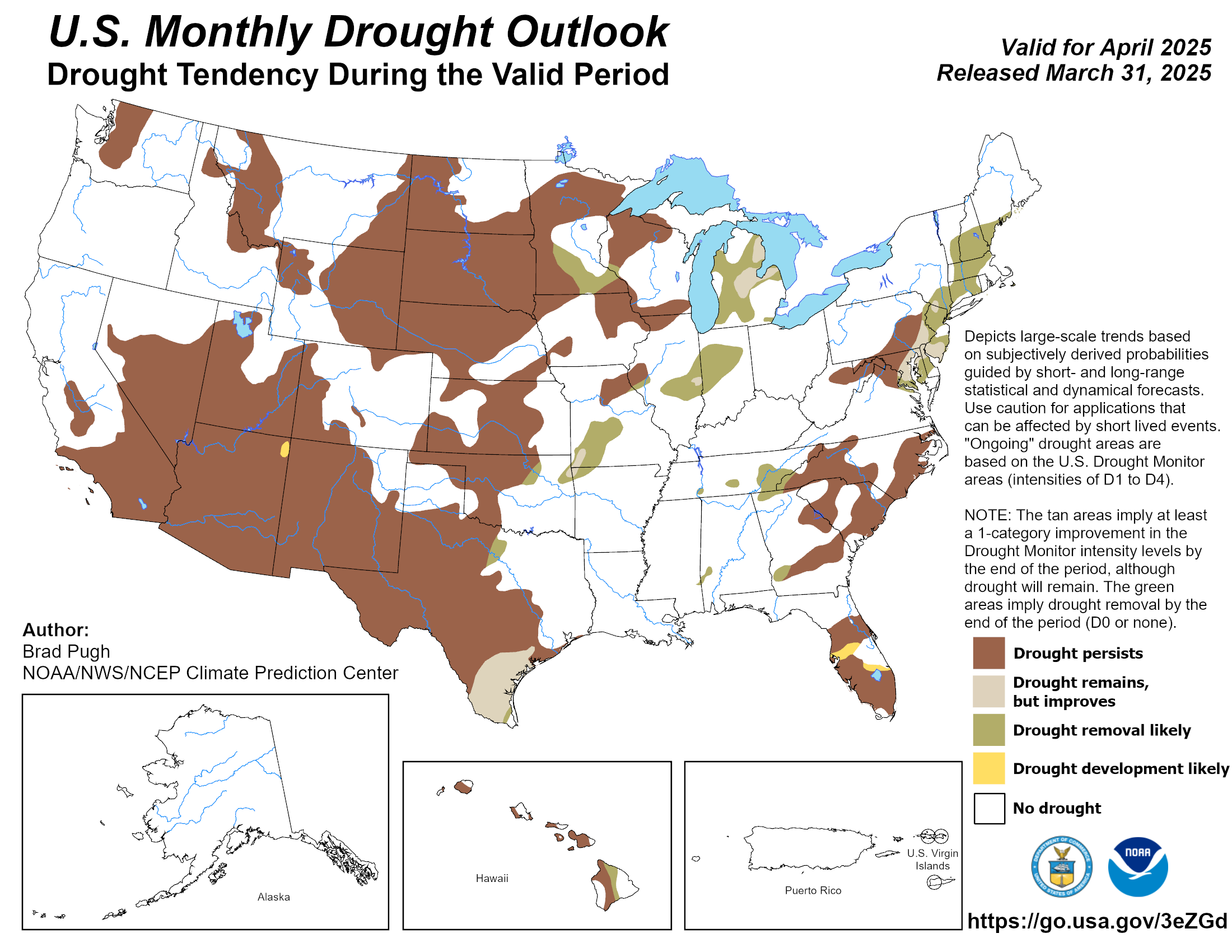Please help the National Weather Service spread these important safety messages on social media! Everyone is welcome to use the text and images provided below to help the NWS build a Weather-Ready Nation.
Facebook
During a drought, be vigilant. It’s easy to conserve your household water use through simple actions such as turning off the water while brushing or taking shorter showers. Follow any additional directions from local officials. weather.gov/safety/drought
X
During a drought, be vigilant. It’s easy to conserve your household water use through simple actions such as turning off the water while brushing or taking shorter showers. Follow any additional directions from local officials. weather.gov/safety/drought #WeatherReady

Facebook
Droughts can be very hard on society because they are often long-lasting and costly, impacting agriculture, ecosystems, manufacturing, and other sectors. Learn more about drought and view current conditions at drought.gov
X
Droughts can be very hard on society because they are often long-lasting and costly, impacting agriculture, ecosystems, manufacturing, and other sectors. Learn more about drought and view current conditions at drought.gov

Facebook
Drought is a shortage of water over an extended period of time, and is a normal part of climate cycles. During a drought, stay Weather-Ready by conserving water and practicing fire prevention, as dry conditions can lead to wildfires. weather.gov/safety/drought
X
Drought is a shortage of water over an extended period of time, and is a normal part of climate cycles. During a drought, stay #WeatherReady by conserving water and practicing fire prevention, as dry conditions can lead to wildfires. weather.gov/safety/drought #WeatherReady

Facebook
What’s a flash drought? Simply put, it is a rapid onset of drought that is associated with hot, dry and windy conditions. Stay Weather-Ready during drought by conserving water and practicing fire prevention. drought.gov/what-is-drought/flash-drought
X
What’s a flash drought? Simply put, it is a rapid onset of drought that usually includes high temperatures and winds. Stay #WeatherReady during drought by conserving water and practicing fire prevention. drought.gov/what-is-drought/flash-drought

Facebook
Conserve water, practice fire prevention, and follow directions from local officials - watch this video to know what to do during drought conditions: youtu.be/jni8YDoRP5o
X
Conserve water, practice fire prevention, and follow directions from local officials - watch this video to know what to do during drought conditions: youtu.be/jni8YDoRP5o #WeatherReady
Facebook
Drought is a normal feature of our climate. Caused by a deficit of rain or snow over an extended period, it can happen nearly everywhere. In some cases, drought can develop relatively quickly and last only for a very short period of time, exacerbated by extreme heat and/or wind. For other cases, drought can span multiple years or even decades. Where is the drought? Will it change? What are its impacts? Find answers to these questions at drought.gov
X
Drought is a normal feature of our climate, and it can happen nearly everywhere. Where is any current drought? Will it change? What are its impacts? Find answers to these questions at drought.gov #WeatherReady

Facebook
Which parts of the US are experiencing drought this week? The U.S. Drought Monitor has the latest information. Get it at drought.gov
X
Which parts of the US are experiencing drought this week? The U.S. Drought Monitor has the latest information. Get it at drought.gov #WeatherReady

Facebook
The National Weather Service Climate Prediction Center (CPC) issues the U.S. Monthly and Seasonal Drought Outlooks, which show how areas experiencing drought now are expected to evolve in the coming month or season, as well as indicating areas where new droughts may develop. cpc.ncep.noaa.gov/products/Drought/
X
The National Weather Service Climate Prediction Center (CPC) issues the U.S. Monthly and Seasonal Drought Outlooks. Use these products to discover the drought conditions where you live. cpc.ncep.noaa.gov/products/Drought/ #WeatherReady
